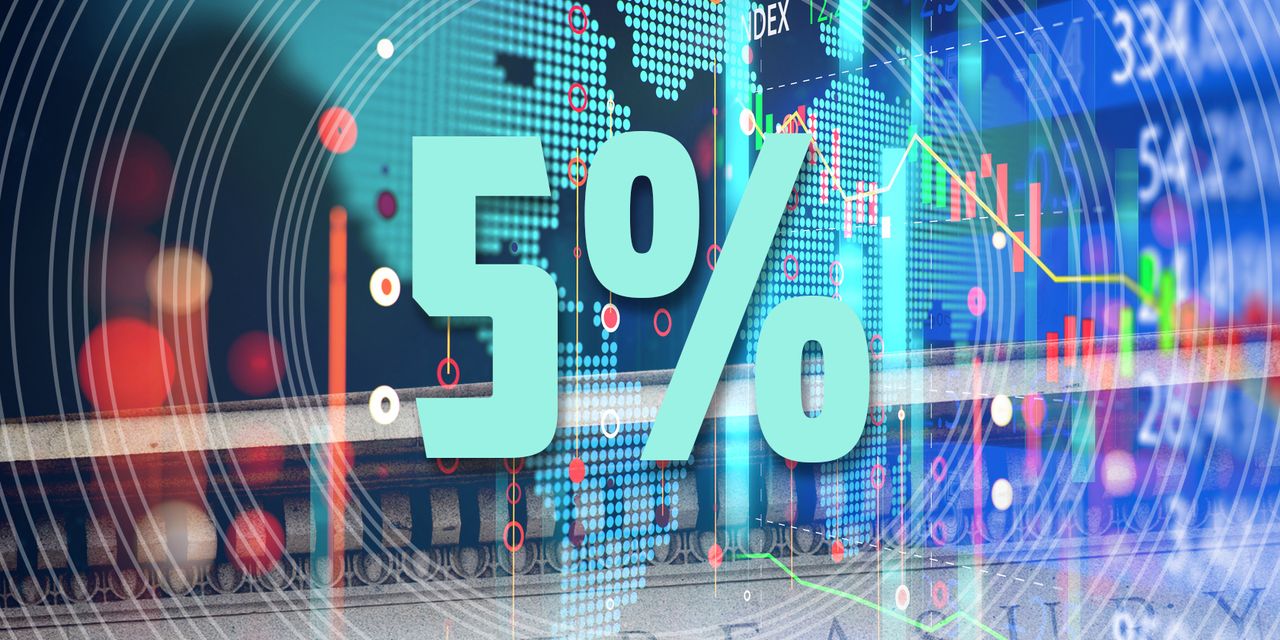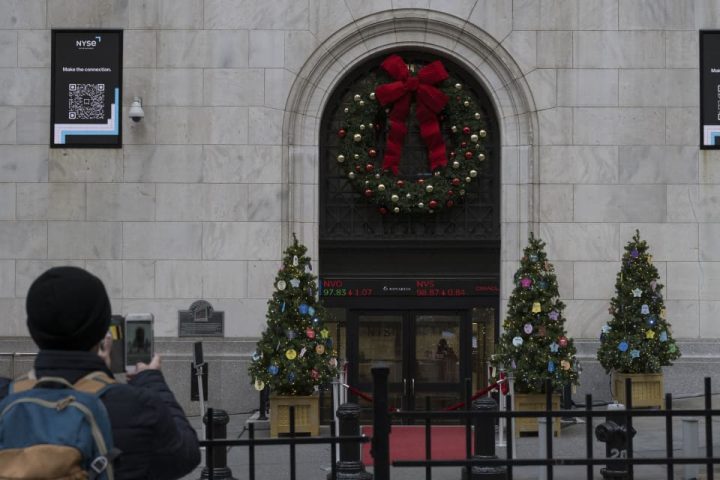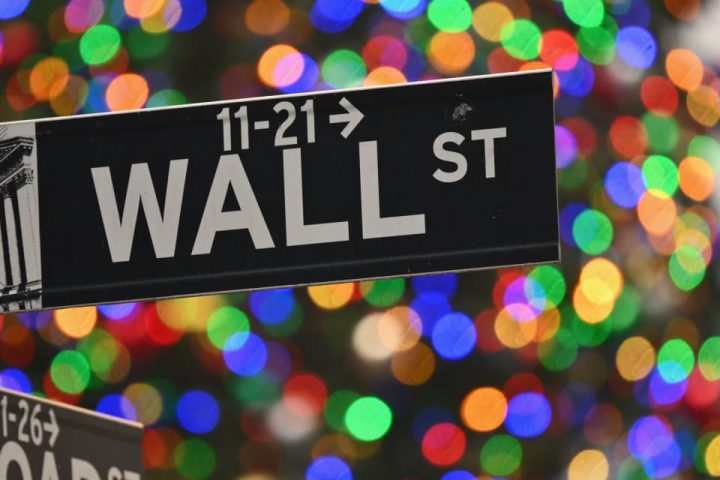U.S. stock investors are facing a confluence of challenges, with the benchmark 10-year Treasury yield poised to possibly break 5% for the first time in 16 years.
The benchmark rate, used as the benchmark on everything from mortgages to student and auto loans, traded as high as 4.992% on Thursday. The 10-year rate
BX:TMUBMUSD10Y
hasn’t ended the New York session above 5% since July 19, 2007.
A 5% 10-year rate is regarded by investors as a significant milestone for a number of reasons. One is that it generally makes government debt more appealing when compared to stocks, as investors and traders factor in a higher cost of doing business by companies and discount the value of their future earnings.
On Thursday, stock investors tried to interpret remarks made by Federal Federal Reserve Chairman Jerome Powell as dovish, even though he talked about the economy’s resiliency and left the door open to more rate hikes if needed. All three major stock indexes
DJIA
SPX
COMP
swung between gains and losses Thursday afternoon and the 10-year yield pulled back slightly after jumping back to the edge of 5% as Powell spoke.
In a note on Thursday, Raffi Boyadjian, lead investment analyst for Cyprus-based multiasset brokerage XM, wrote that “stocks took fright from the relentless upward march in bond yields” seen on Wednesday — when 2-
BX:TMUBMUSD02Y,
10, and 30-year yields
BX:TMUBMUSD30Y
all finished at their highest levels since 2006-2007 — and now “equities face growing headwinds” as the reality of higher-for-long rates sinks in.
Read: The 10-Year Treasury Yield Is About to Hit 5%. What That Means for Stocks, Gold, and More.
The ride to 5% is occurring during what BofA calls the worst bond bear market in almost 250 years of U.S. history. Chris Low, chief economist of FHN Financial in New York, said that “it is starting to look like technicals are caught in a doom loop,” in which the rise in yields is “almost self-perpetuating.”
Central banks like the Fed, which used to be the biggest bond buyers, aren’t purchasing right now because they’re shrinking their balance sheets, and countries like China are selling long-dated Treasurys.
“That leaves the big buyers as banks, pension funds and insurance companies,” Low said via phone on Thursday. “They all have money they have to put somewhere in Treasurys because it’s a safe place to go, but the problem is that the big institutional ones already have deep, unrealized losses from extending duration in government debt, agency debt, callable agency debt, and corporate debt.”
He also said that “what we’re seeing with almost all of our fixed-income customers is that if they don’t have cash, they don’t want to invest, or the ones that do are really cautious about what they’re buying and they don’t want to buy long-dated paper.”
The 10-year yield has come a long way from where it was in 2020, when it traded at almost zero during the U.S. onset of the Covid-19 pandemic. It’s now returning to the historical levels that prevailed prior to the 2007-2009 financial crisis and recession.
The rate has jumped more than a full percentage point this year alone, driven by an unexpected combination of U.S. economic strength and persistent inflation, along with the Federal Reserve’s higher-for-longer theme in interest rates. Also playing some role are unknowable factors known as term premium, which may be related to the increased supply of government debt and uncertain inflation outlook, though how much of a role isn’t clear.
On Thursday, Powell gave credence to the idea that term premium is an important factor that’s driving the moves in long-term government debt. He also said the moves have less to do with the market’s short-term views on where inflation and the Fed’s main interest-rate target are likely to go.
At New York’s FHN Financial, Low said that a 5% yield “is a psychological level at which the 10-year Treasury note is very likely a good investment and it’s the kind of return that makes sense to more people than the 1% to 2% returns we were getting a few years ago. And at some point, buyers will come. It’s the kind of thing that’s appealing to retail investors who haven’t thought about Treasurys in a long time, and will even eventually establish a floor under prices.”
Until then, higher yields make it “harder and harder to justify all kinds of economic activity, which means equities start to lose value,” Low said.
Read the full article here







